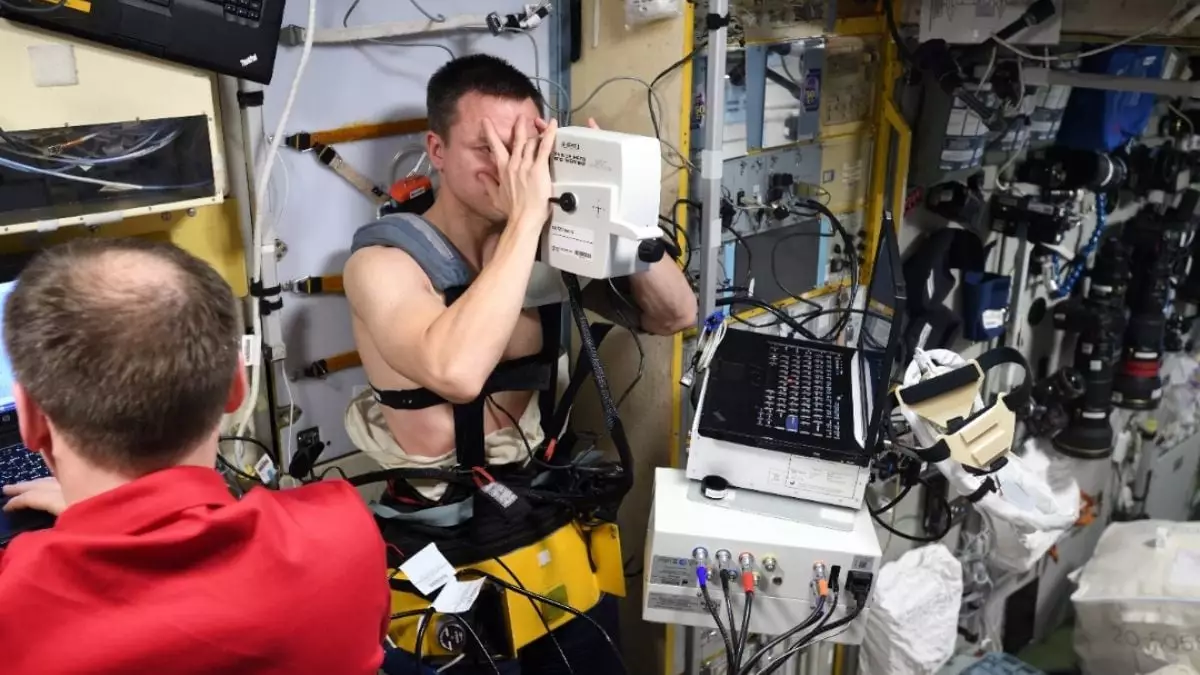The exploration of outer space carries with it a host of challenges, one of the most pressing being the health of astronauts. Recent findings have revealed that a substantial percentage of astronauts aboard the International Space Station (ISS) have encountered significant alterations in their vision, sparking alarm as space agencies prepare for future long-term missions. With reports indicating that up to 70% of astronauts who have spent an extended amount of time in microgravity suffer from visual changes, it is clear that this issue demands serious attention.
Understanding Spaceflight-Associated Neuro-Ocular Syndrome (SANS)
The primary condition linked to these vision changes is known as spaceflight-associated neuro-ocular syndrome (SANS). Astronauts suffering from SANS report a variety of symptoms, including swelling of the optic nerve and flattening of the back of the eye, which can ultimately lead to impaired vision. Researchers believe these symptoms are a result of fluid redistribution due to the lack of gravity, which increases pressure on ocular structures. While many affected astronauts experience recovery upon their return to Earth, the long-term effects of these changes—and their implications for the future of human space travel—remain largely unknown.
A significant study led by Santiago Costantino at the Université de Montréal sought to understand the extent of vision changes incurred by astronauts during their time in space. By closely monitoring a group of 13 astronauts aged 48 on average, who had spent five to six months on the ISS, researchers recorded various eye health metrics before and after the missions. They discovered a concerning average decrease of 33% in ocular rigidity, an 11% decline in intraocular pressure, and a 25% drop in ocular pulse amplitude post-flight. Notably, some astronauts displayed increased choroidal thickness, elevating concerns about potential chronic ocular conditions.
The Historical Context of SANS
SANS is not a new phenomenon; it has been acknowledged since the early 2000s, with incidents also reported by Russian cosmonauts onboard the Mir space station. NASA officially recognized this debilitating condition in 2011, emphasizing the relevance of addressing potential health risks posed by prolonged space missions. Fluid shifts in microgravity are believed to be a primary culprit, yet the precise biological mechanisms resulting in these ocular changes are still under investigation.
In light of these findings, various countermeasures are being proposed to protect astronauts’ eyesight. These include the utilization of negative pressure devices, pharmaceutical interventions, and tailored nutritional plans. Moreover, ongoing research aims to identify which astronauts are more susceptible to developing severe ocular complications, which could pave the way for early detection and effective management solutions. According to Costantino, the alterations in the mechanical properties of the eye might serve as invaluable biomarkers for SANS.
As we stand on the brink of deeper explorations into space, particularly targeted missions to Mars and beyond, ensuring astronaut health—including safeguarding their vision—will remain a priority for space agencies worldwide. Continued research into SANS and its effects is crucial as we venture into the unknown, highlighting the importance of mitigating health risks associated with microgravity during extended missions.

